Paris Catacombs- History, Facts and Tips for Visiting
Purchases made through links earn us a small commission, at no extra cost to you.
The Paris Catacombs are an underground ossuary that is considered to be one of the world’s largest burial grounds. It is estimated that there are in excess of six million people buried below Paris in a network of tunnels.
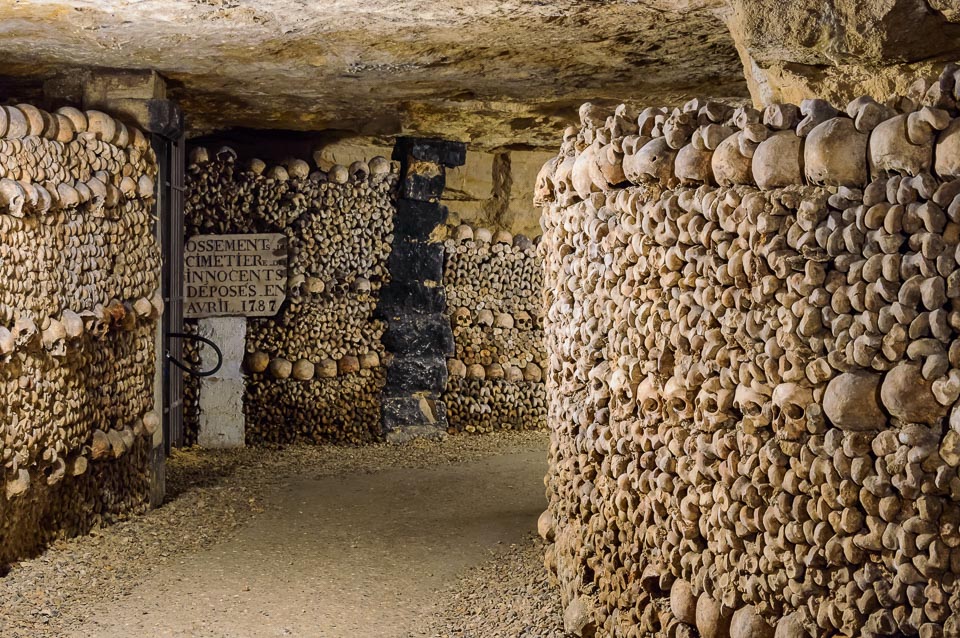
A trip down to visit the Paris Catacombs is not for the faint-hearted as it has a somewhat eerie, morbid, and well, deathly feel. There are rows upon rows of neatly stacked human remains in the tunnels – femurs, skulls, and other human bones.
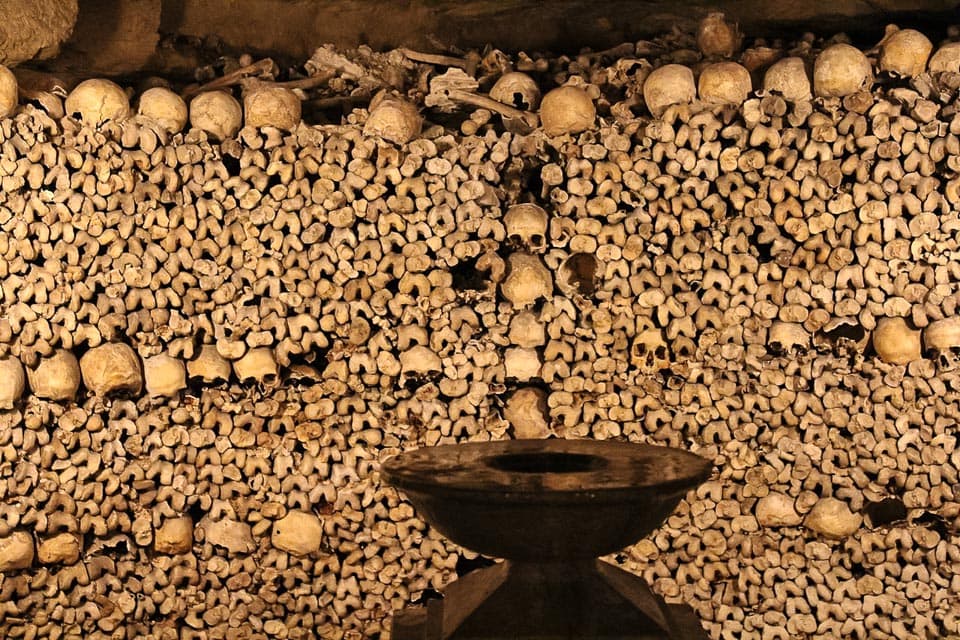
If you’re curious about the Paris Catacombs, this article has everything you need to know about them from the history and design to some interesting facts and what to expect during a visit.
So, let’s descend into the dark, underground world of the Catacombs of Paris.
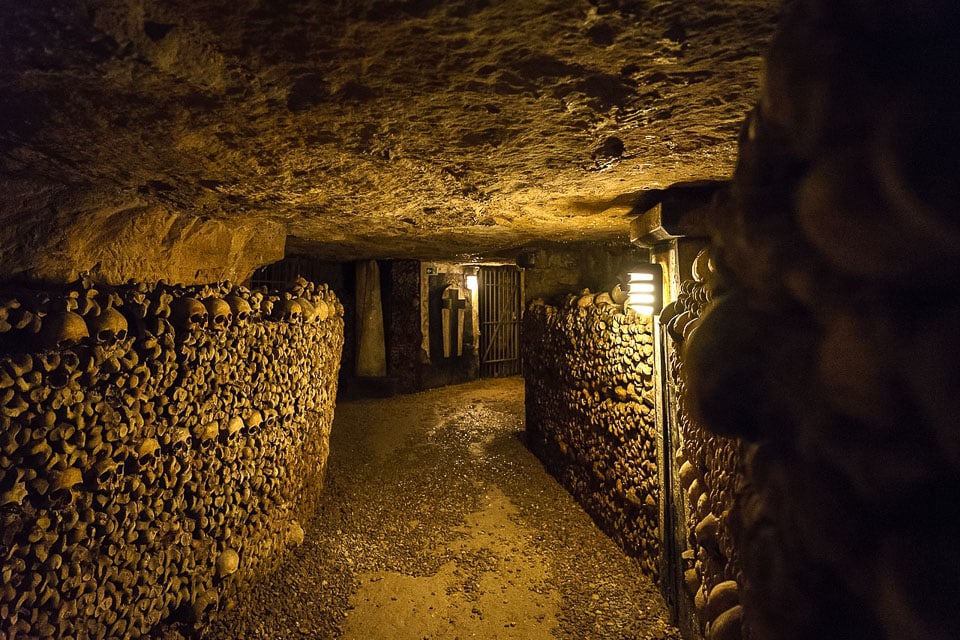
In This Post
History of the Paris Catacombs and Why the Paris Ossuary was Built
Let’s start off with the history of the Paris Catacombs. Towards the end of the 18th century, the cemeteries in Paris started to become overcrowded and unsanitary. The Cimetière des Innocents, Paris’ oldest and largest cemetery at the time, had reached capacity so the city needed an alternative burial site for the deceased.
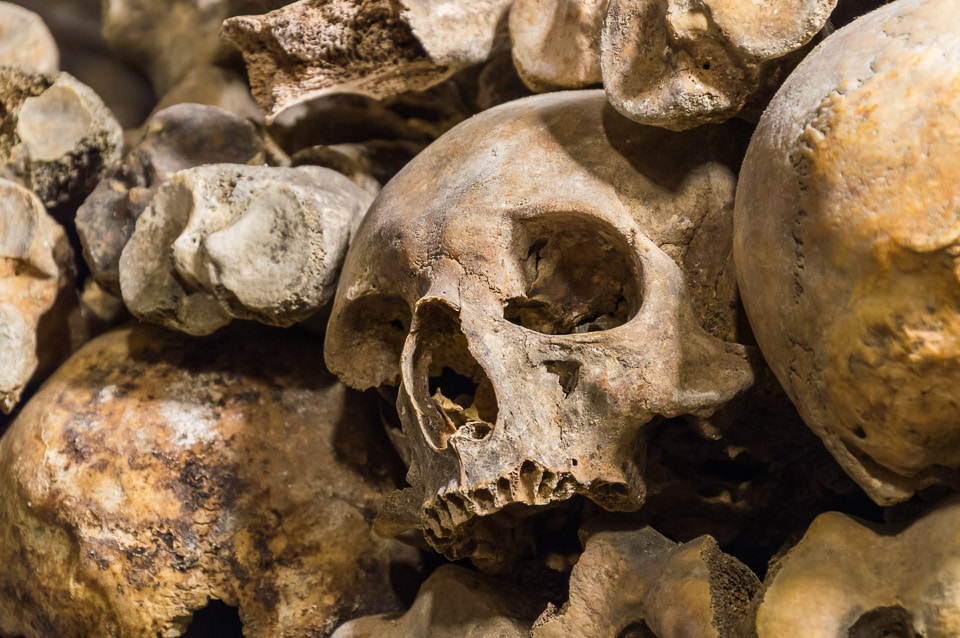
By 1780, the conditions at the cemetery had worsened to a point that locals were starting to complain about foul odours in the surrounding areas. The idea to pack human remains in “charniers” or mass graves was born. Bones were piled on top of each other, tightly packed inside the walls of the cemetery building.
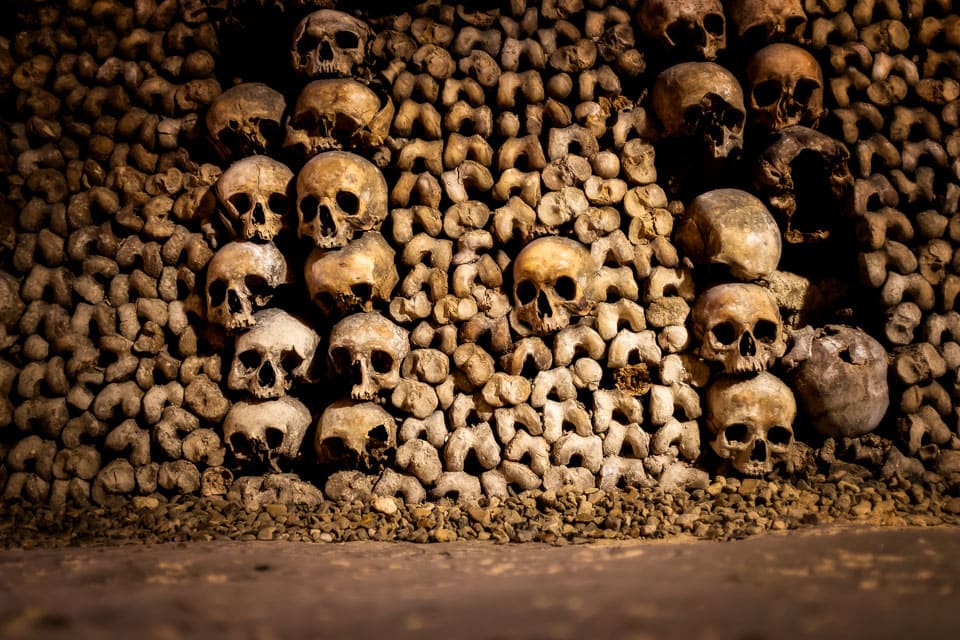
Still, the cemetery remained overcrowded and conditions kept deteriorating. The low point, so to speak, was when a local restauranteur arrived at work to find a cellar full of corpses due to part of the cemetery’s wall collapsing. An alternative solution was urgently needed.
The Cimetière des Innocents was permanently closed in 1780. As a further measure, Louis XVI issued an edict that forbade all burials within the city limits. With no cemeteries in Paris left to bury the dead, the idea for an underground ossuary was born.
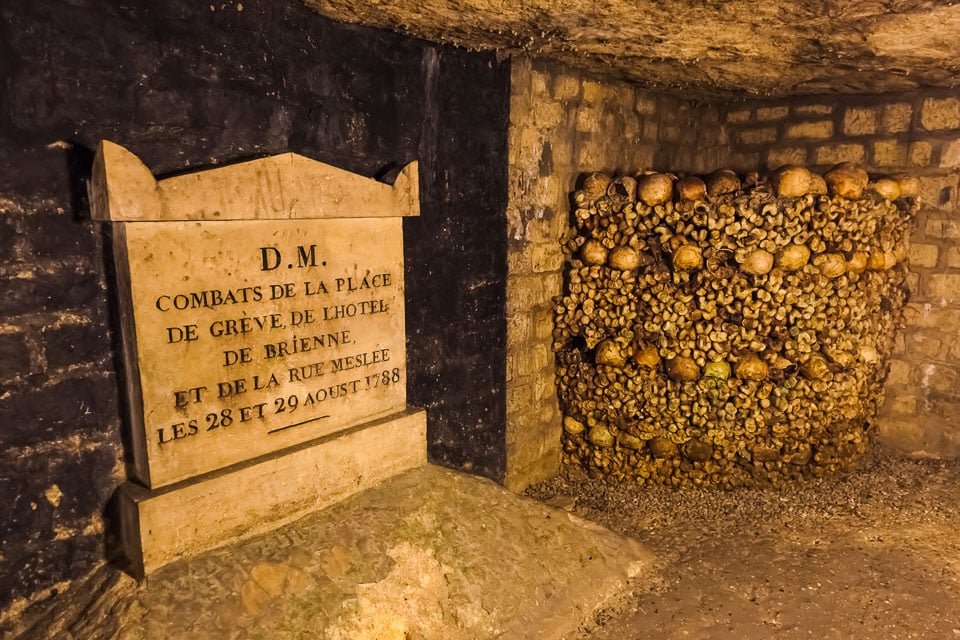
Creation and Design of the Paris Catacombs
At the time of the city’s cemetery problem, Paris was also experiencing another serious issue- the quarries below the city were starting to collapse.
These quarries had been previously used to mine limestone that was used to construct the city. However, as Paris expanded, and more structures were added to meet the needs of the growing population, the quarries began caving in.
The catacombs under Paris would be the solution to these problems. By filling the old quarries and voids with the skeletal remains, Paris’ underground would be reinforced and there was a place to keep the dead. A win-win situation.
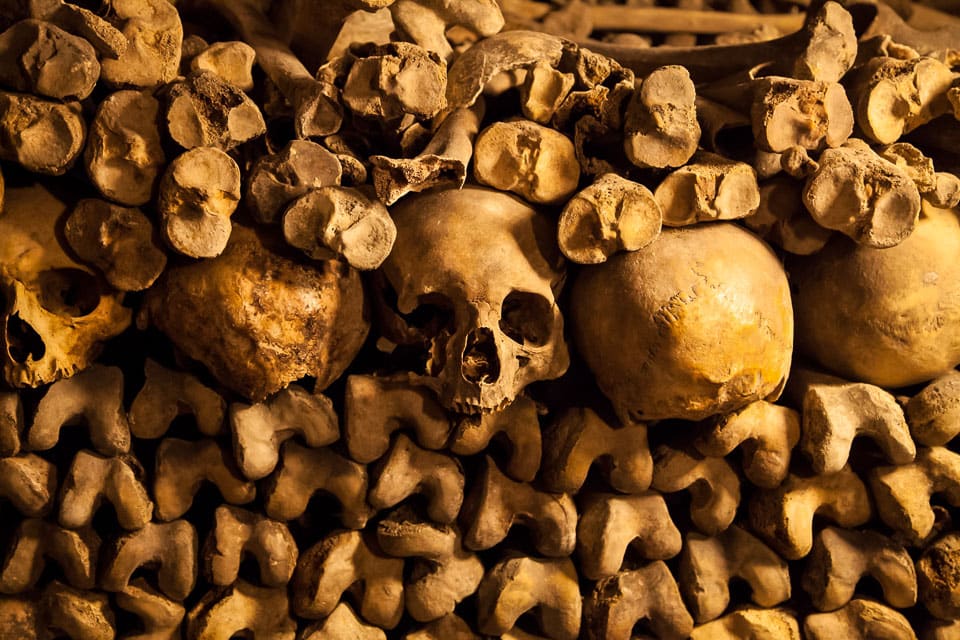
Bodies from the Cimetière des Innocents started to be exhumed in 1785 and at night their bones were moved to the quarries. At first, there was no special design for the Paris ossuary- bones were simply dumped into the wells and then piled into the galleries by quarry workers. This made for a very disorganized bone repository.
In 1786, with bone transfers still taking place, this mine-turned-burial site was consecrated as the “Paris Municipal Ossuary”. Unofficially it became known as catacombs, in reference to the fascinating Roman Catacombs.
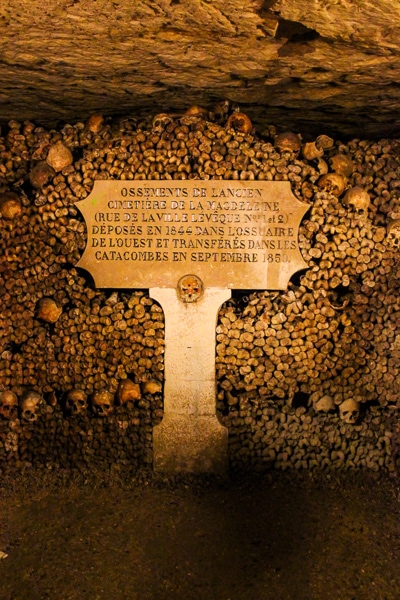
In 1809 the Catacombs of Paris opened to the public, but the bones were still in disarray. Starting in 1810, the director of the Department of General Quarry Inspection began rearranging the bones, transforming the tunnels into visitable burial chambers. Skulls and femurs were stacked in eye-catching patterns to create walls of bones lining the passageways.

During this renovation, monumental tablets, arches, and leftover cemetery decorations were added, along with tablets displaying information about the ossuary.
The way the bones under Paris were so neatly arranged is part of the reason why the Parisian catacombs are such an intriguing tourist attraction.
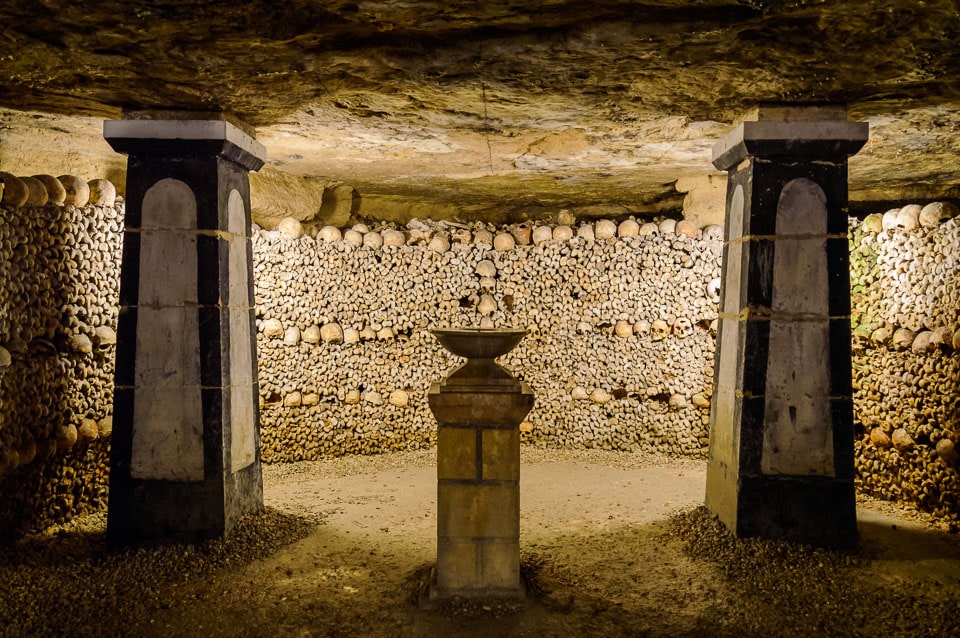
What to Expect When Visiting the Catacombs of Paris
The Paris Catacombs tour is a rather unique experience, to say the least, and you’ll probably see more skeletons than you ever have in your life.

The journey starts above ground at the Place Denfert-Rochereau. There are only 200 people permitted to be down in the catacombs at any given time, so there is usually a long line of eagerly waiting visitors snaking through the square.
The 20 m/65 ft descent to the Paris Catacombs entrance is done via 131 stairs. Once at the bottom, you still have to walk through limestone tunnels to get to the entrance of the ossuary. Even though there are no bones in this first section, there are some informative panels on the walls so you can learn a bit about the catacombs.
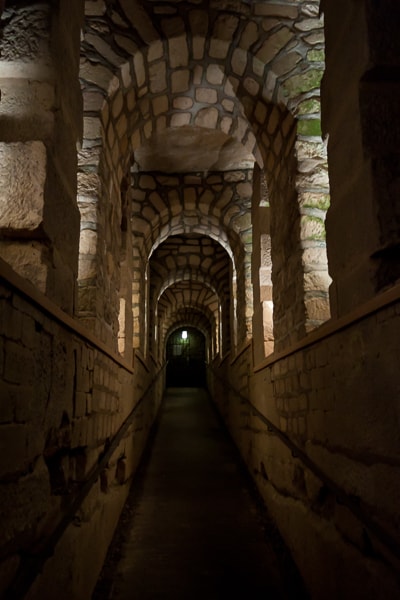
Once you arrive at the main part of the ossuary you will see a sign positioned above the entrance that reads, “Arrête! C’est ici l’empire de la Mort”. Translated into English, this reads “Stop! This is the Empire of the Dead”. This is a somewhat ominous inscription but goes with the theme of the tour.
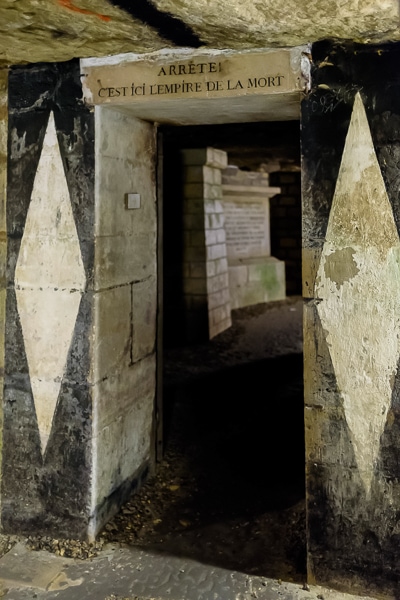
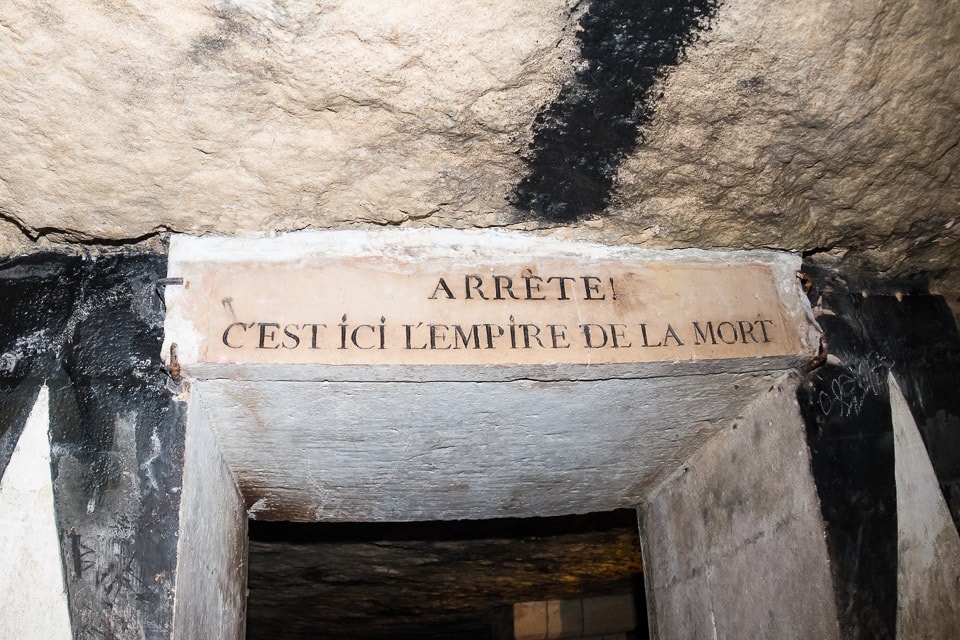
Expect to pass rows upon rows of skulls and bones that are stacked from floor to ceiling as you walk through the roughly 1.5 kilometre network of tunnels.
You’ll notice that the different sections of bones are marked with signs indicating what cemetery they were transferred from and the date they were deposited in the ossuary.
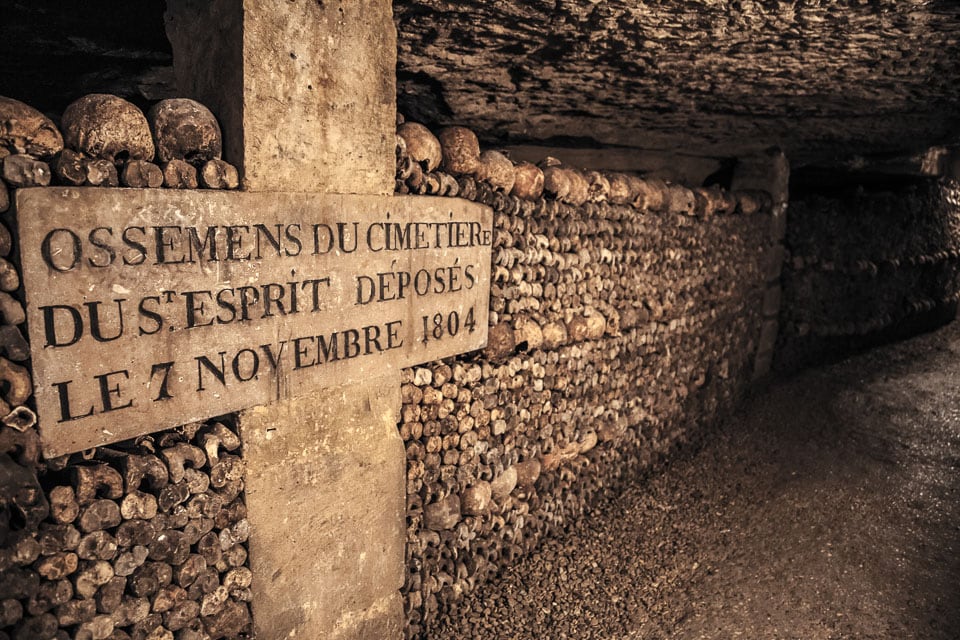
One of the most impressive rooms in the Paris Catacombs is the Crypt of Passions. Here you’ll see a giant barrel-shaped column of skulls and ankle bones.
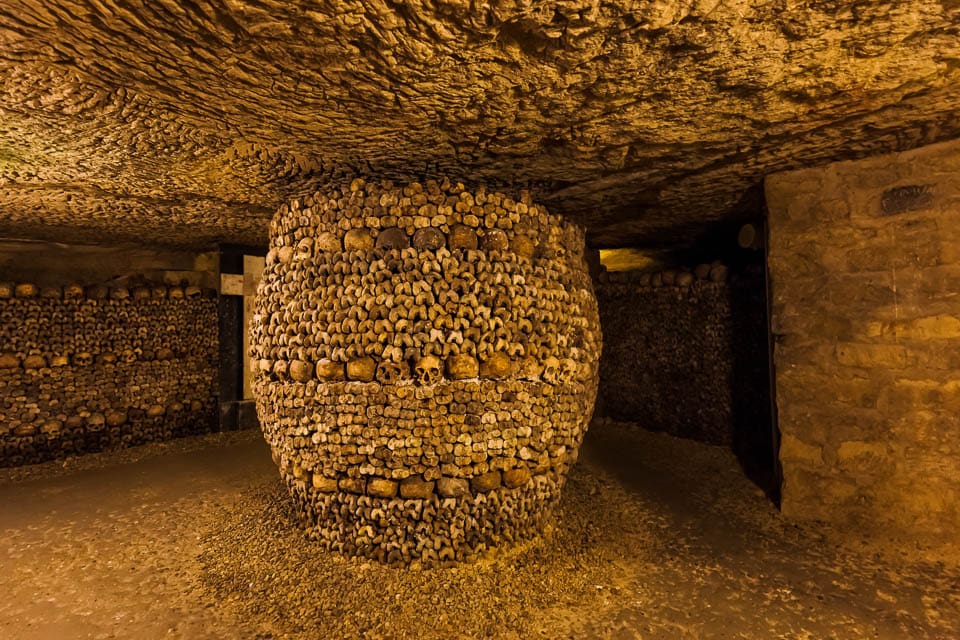
A self-guided tour of the Paris Catacombs usually takes around 45 minutes to 1 hour to complete. Guided tours typically take 1.5- 2 hours.
After your tour of the Paris Catacombs, you’ll have to climb 112 steps back to the bustling streets of Paris.
Interesting Facts About the Paris Catacombs
While the catacombs themselves are incredibly interesting, there are several other facts that are both mind-boggling and downright creepy. Here are a few more facts about the Catacombs of Paris:
- There is a large sculpture of the Port-Mahon fortress that is carved into the limestone walls. This was carved out at the time that the tunnels were used for mining materials for the construction of the city.
- The Paris Catacombs’ size is unfathomable – they cover an area of around 800 hectares (almost 2000 acres). Only a small part is open to the public.
- If laid out in a straight line, the tunnel network under Paris is thought to be in the region of 300 km long.
- The ossuary is not all gloom and doom – some of the bones are arranged in an artistic manner and there’s even a heart made of skulls on one of the tunnel walls.
- In 2015, Airbnb paid €350,000 to use the tunnels for a publicity stunt that offered two people the chance to stay overnight in the catacombs on Halloween night.
- About 550,000 people visit the Paris Catacombs each year.
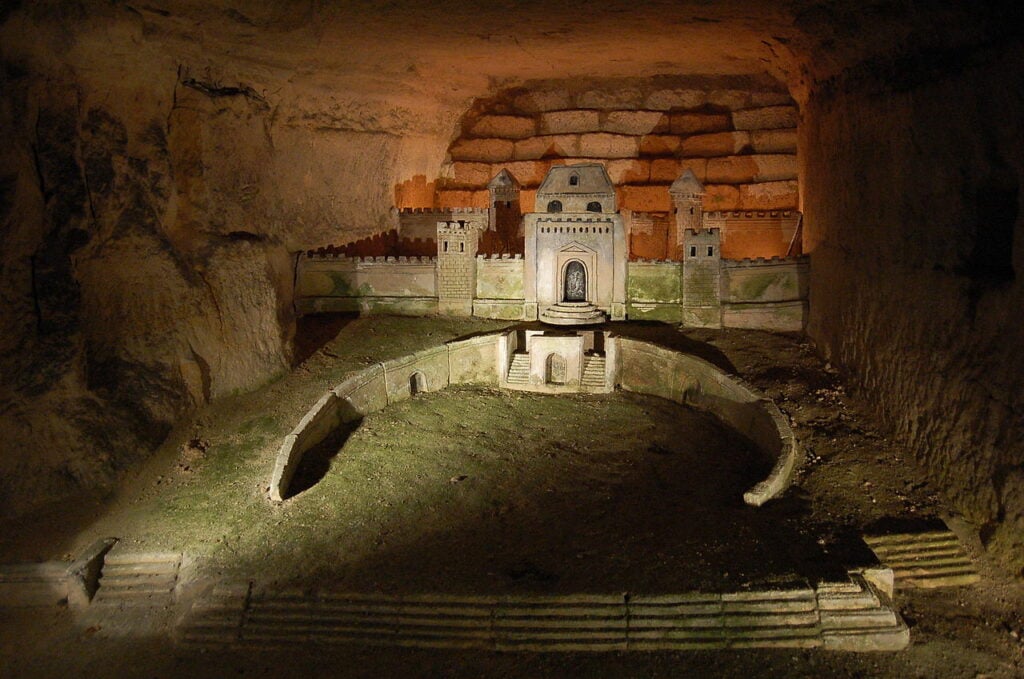
Final Words
The Parisian catacombs are an underground network of dark, damp tunnels lined with human remains. While this doesn’t sound like the most appealing place to explore, they are definitely worth visiting. A visit to this Paris ossuary is both unique and unusual, which makes it attractive to adventurous types and those eager for interesting experiences.
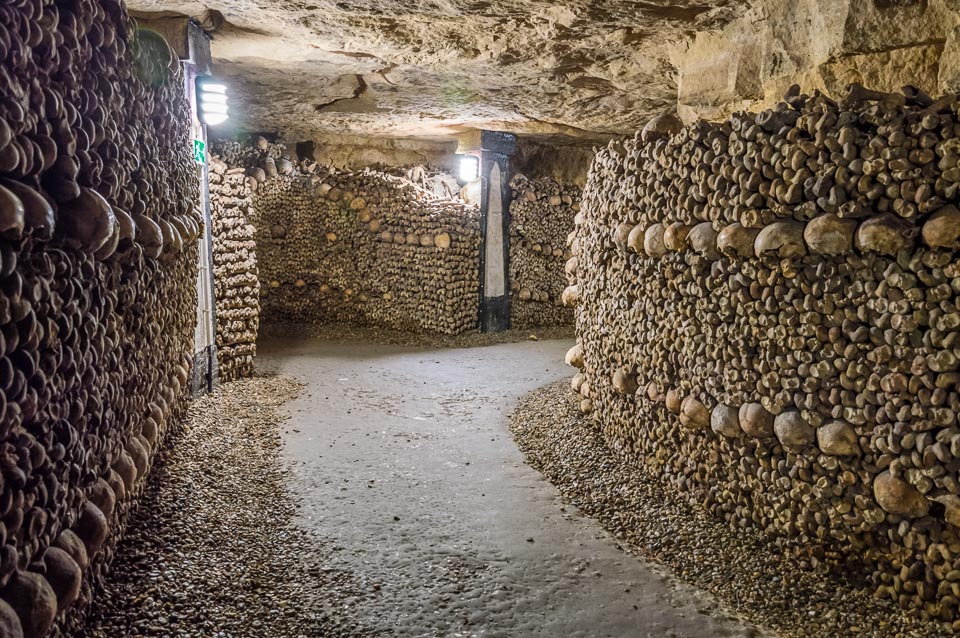
While the city of Paris seems to encompass all things beautiful and wonderful in this world- food, wine, love, and light- the Parisian catacombs are far from these things. However, with a little shift in mindset, you’ll be able to appreciate the unconventional beauty of the walls and sculptures created out of human bones and skulls.
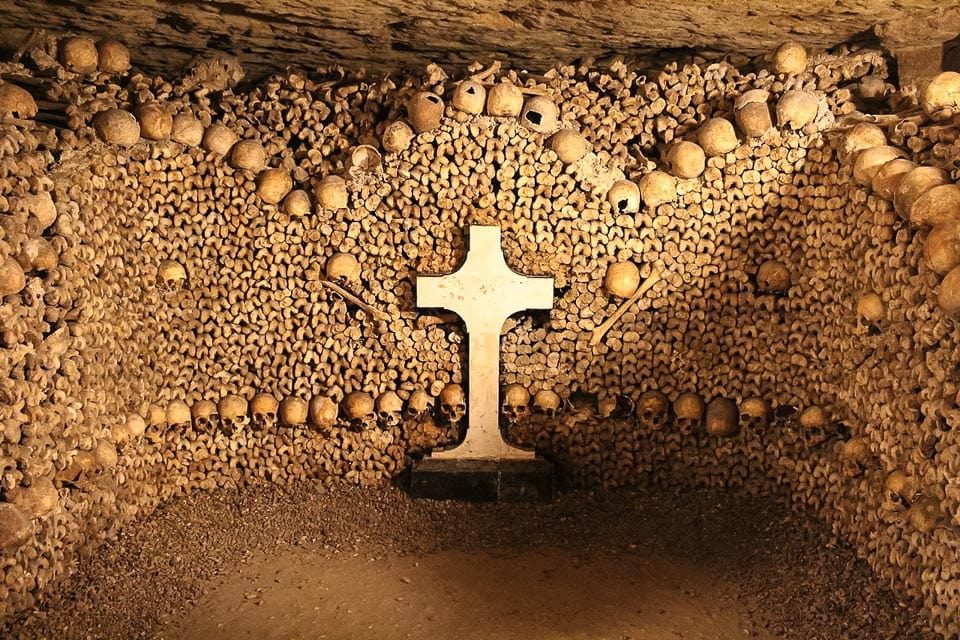
Practical Information for Visiting the Catacombs in Paris
Location: The Paris Catacombs entrance is at 1, Avenue du Colonel Henri Rol-Tanguy (Place Denfert-Rochereau).
Hours: The catacombs in Paris are open Tuesday to Sunday from 9:45 am- 8:30 pm (last admission is at 7:30 pm. Confirm current hours here.
Admission Fees: Yes. Current rates can be seen here.
- Audio guides are available to rent in French, English, Spanish, and German.
Buy Tickets: Skip the line by buying advance tickets here.
Book Tours: You can book a guided tour of the Paris Catacombs online here.
Visitor Guidelines: You are not allowed to eat, drink, or smoke inside the catacombs. Camera tripods are also not allowed.
Paris Accommodations
If you’re planning to visit the Paris Catacombs and need accommodations, here is a list of hotels in Paris. Please consider booking your Paris accommodations through the included link. It costs nothing extra and helps support this website.
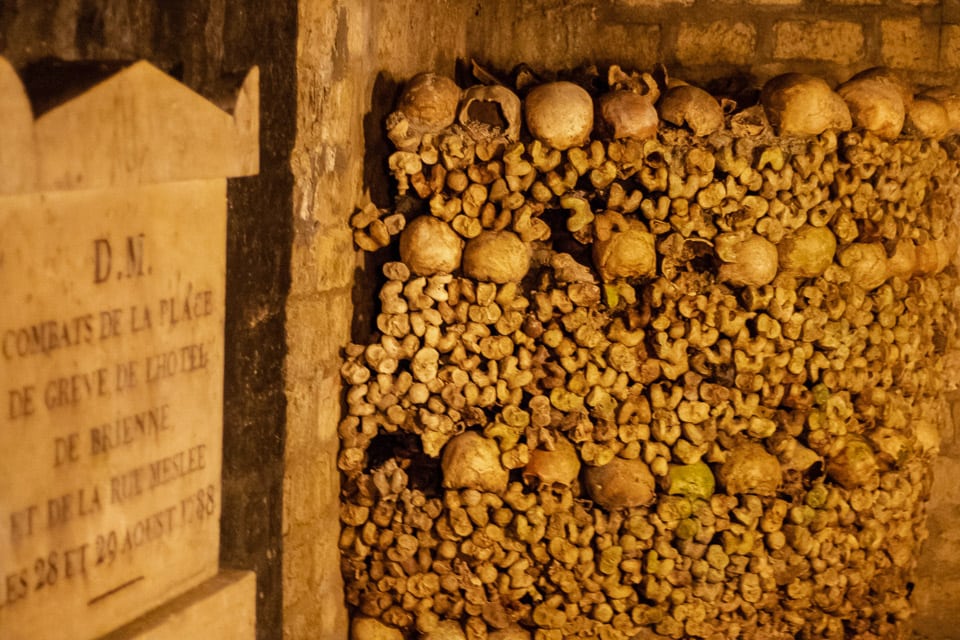
More Burial Places in Paris
- Père Lachaise Cemetery- Paris’ Legendary Necropolis
- Montmartre Cemetery- Paris’ North Cemetery
- Famous People Buried in Paris- A Guide to the Famous Graves in Paris
- Napoleon’s Tomb- History, Design and Tips for Visiting Napoleon Bonaparte’s Tomb
- Pantheon of Paris- A Mausoleum for France’s National Heroes
- Montparnasse Cemetery- Paris’ South Cemetery
